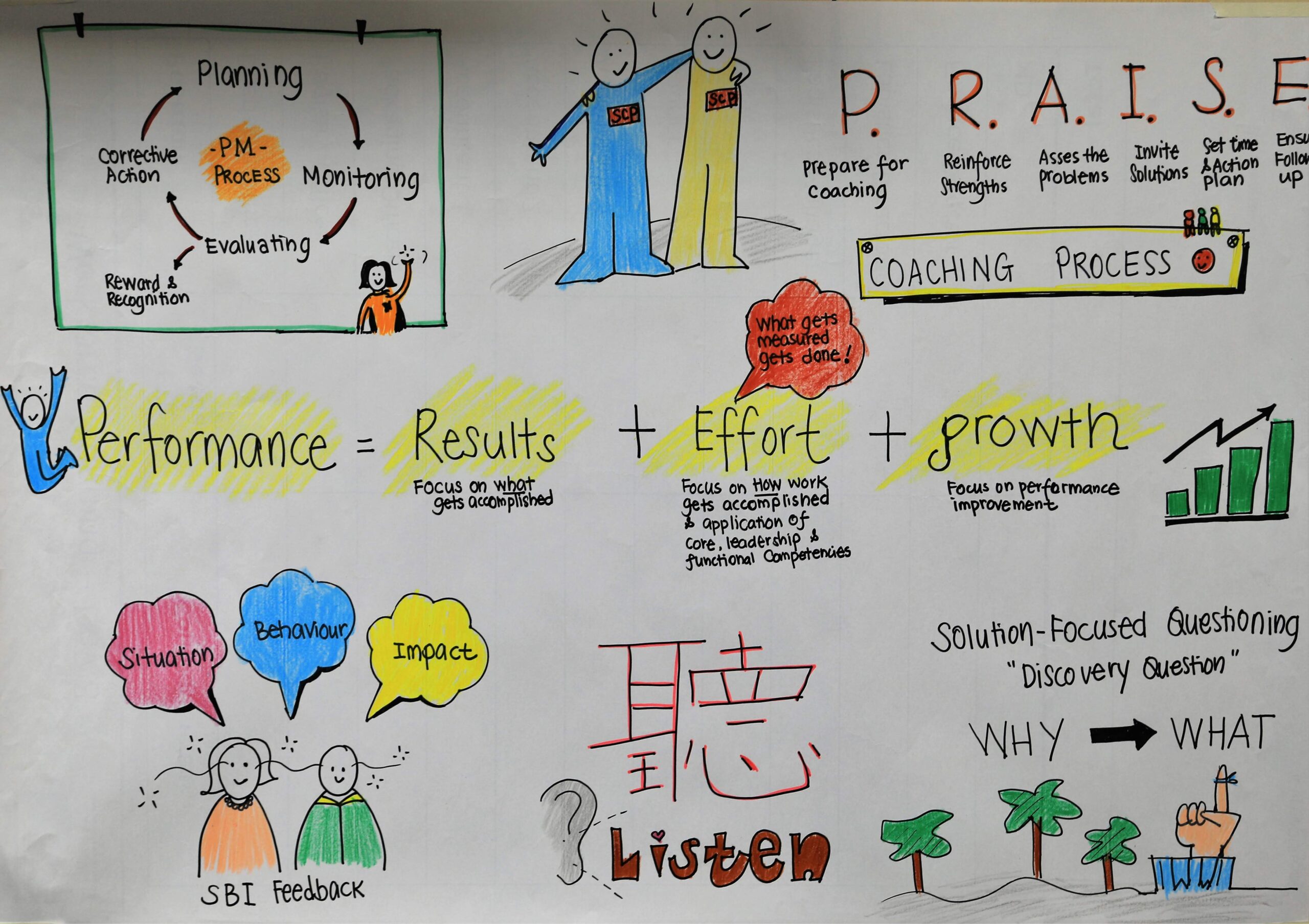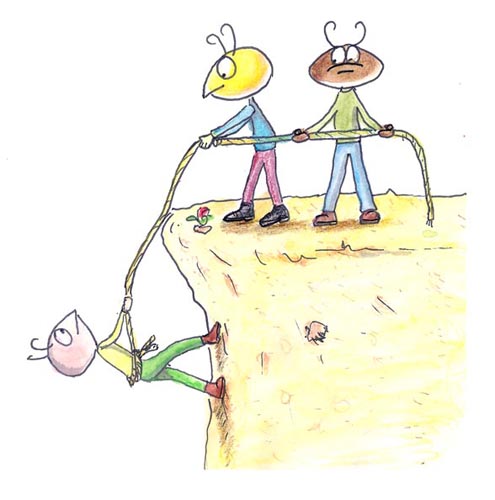Manager as Coach
Coaching is a powerful style of leadership for developing people and enhancing business performance. Especially, with the rapid changes at workplaces, keeping employees’ committed and motivated during tough economic times seems like a tall task, especially after downsizing or programme cutbacks.
Hence, it is evident that the very survival and success of any organisation depends on the human capital: people are highly knowledgeable, versatile, innovative and mobile. And, their skills and talents are the currency of competitiveness, and companies who hope to retain their services need to recognise that these individuals expect greater personal choice, autonomy and an active voice in the management of their workplace.
A good coach knows that.
The days of the command-and-control style of leadership are long over. Hence, leaders are required to engage the energy and thoughts of their teams in order to make them commit totally to a given course of action. Moreover, the process of coaching is ongoing and lifelong as learning is one of the few activities that one must frequently be engaged in as leaders sustain competitiveness through people development.
My experience is clear: If leaders get feedback, follow-up, and involve their co-workers in the change process, they get better.
Marshall Goldsmith
Coaching as Part of Personal Mastery
For managers wishing to acquire confidence as a coaching manager, practicing feedback skills, both giving and receiving, is a good place to start.
Firstly we need to know more about ourselves, i.e. attain greater self-awareness. Because it is only when we can see ourselves as others are seeing us that we can interact effectively with others. As a manager and an individual, we need to improve personally as well.
So, being able to ask for and receive feedback is extremely important. Many people miss the chance to improve themselves because they don’t know how to ask for feedback. Worse, when feedback is given, they may not know how to handle it.
Secondly, we need to learn how to help others to be successful. As a manager, we achieve success only when our people are successful. If we can develop them further, they will be even more productive and will contribute greater to the business. Thus, by being able to give feedback effectively, a manager contributes to continuous improvements in his colleagues. Teams and individuals that regularly receive useful inputs that they can then act upon will operate more purposefully and effectively.

How to Coach – the Coaching Style
Understanding Coaching: Coaching helps you to bring out the potential in your staff. The coaching process closes the gap between individuals’ or teams’ present level of performance and the desired one. This can happen within a single coaching session, or over a long cycle of sessions. As a coach-manager, you will develop your staff by mutually assessing performance, discussing the present situation, defining achievable goals, exploring new initiatives, and supporting your coachee in his plan of action. Coaching refers both to specific skills and encouragement of long-term development.
Why coaching: By coaching, managers release their own time, improve staff’s performance and enhance productivity of their organisations. Hence, coach and delegate more, and supervise less, to boost productivity and help team members fulfil their potential.
Selecting a coaching style: Sometimes people like clear directions and definite answers to their question. At times, we want to be involved in a dialogue about our own development and goals. Select the style most appropriate for the coachee.
- Dominant (D) – Do As I tell you, do as I do!
- Influencing (i) – You can do it!
- Steady/Sympathetic (S) – Do it better this way, what do you think?
- Controlling (C) – Figure it out this way and why!
How to Communicate – the Communication Style
Our own personality characteristics regarding interacting with others influence and determine our style of coaching (DiSC). Our coaching style defines the way we communicate with our coachee. There are four communication styles for coaches: Amiable, Expressive, Driver and Analyst
- Amiable: The amiable communication style tends to lead people by caring for others, providing support, and talking about the past.
- Expressive: The expressive communication style tends to lead people by sharing ideas, concepts or theories, seeing all possibilities, motivating, inspiring, and focusing on coachee’s future.
- Driver: The driver communication style tends to lead people by focusing on action, getting right to the point, and not wanting to wait.
- Analyst: The analyst communication style tends to lead people by staying focused on facts, information, rules, and established procedures.
Developing coaching relationship: Autonomy, initiative, decisiveness and a sense of ownership for one’s work are essential for effective professionals. Encourage and develop these qualities in your staff to make them more receptive to a coaching approach. Treating them as partners fosters commitment and enterprise rather than compliance.
Initiating coaching: The first steps in the coaching cycle lay the foundations for its likely success. Be clear about when to start coaching, and how to structure and follow up a session. Coaching can be spontaneous or formal. It can be given on a one-off basis or can work long-term over many sessions. It may be requested by the coachee, or called for by the coach. The setting is important. There should be a sense of trust and mutual respect between both parties. Both parties should feel at ease in each other’s presence. Choose a quiet place and schedule sessions regularly for follow-up.
Using the GAINS model: The GAINS model is a structured and simple way to shape and organise the coaching session.
Goal
Agree on a goal, make it specific and as SMART as possible.
“I would like to improve my communication with my Director. I hope I will be more comfortable walking into his office and give him update or even feedback about his behaviour and leadership style, by end of this year.”
Assessment
Help them understand what the current situation is. Between goal and assessment is the gap.
“Presently, whenever I see him, I just have the fear and can’t utter a word. I do not know why, even though my other colleagues have no problem.”
Ideas
Explore possible actions to bridge the gap. What are some obstacles to consider?
“I thought of inviting him for lunch, and give him feedback over lunch. But I am afraid he may dominate the conversation or get angry with me. My colleagues have been hoping that I can do something about it since his leadership style has been affecting everyone’s morale. I really do not know how I should approach it. Another idea which I thought of is to go to his boss but I guess I will do it only if I do not intend to continue in this job…”
Next Steps
Aggress on actions to be taken.
“Okay, I will make appointment with his PA to have lunch together. I will not talk about the hot potatoes during the first lunch meeting. The first meeting shall be my first relationship building step, to gain his trust and to start talking with him.”
Support
Offer support to coachee, and enable coachee to take responsibility and commit to achieving the goal.
“Can I try out with you first? Can you be my boss?”
Coaching moves people from awareness to responsibility to action and results. If there are no actions and results, the coaching is not considered effective.
Coaching is Giving Support
Finally, the last part in developing people or leading people to be more effective toward higher performance is that managers need to be supportive. Two aspects of the supportive model are the skill and knowledge support (can do) and motivation support (will do). Therefore, managers and coachees need to jointly work on and identify the clues by asking the following questions:
- What is the obstacle?
- Which competencies are missing?
- What is the symptom of the obstacles?
- Which opportunities for development present themselves?
Most of us have had at least one good boss in our work history. And, we believe these bosses may possess some competencies of a good coach. Here are the top 10 competencies of a good coach.
A coach is
- highly competent in establishing relationships,
- a creator of ‘coachable’ moments,
- a quick reader of human context,
- a masterful contextual listener,
- a masterful facilitator of discovery,
- a ‘laser’ articulator of information,
- an efficient and effective gap delineator and bridger,
- a ‘stretch’ requestor,
- a consciously competent celebrator of human accomplishment and
- the best of being teacher, trainer, facilitator, advisor, coach, mentor or leader depending on the needs of the individual
Conclusion
In conclusion, to be a good coach is hard work. Hence, it takes a lot of practice and requires continuous self-development. However, the journey as a coach is a long but rewarding one. How will we know when we have arrived?
With the best of leaders, When the work is done, The project is completed,
The people all say, ‘We did it ourselves.’Lao Tzu










